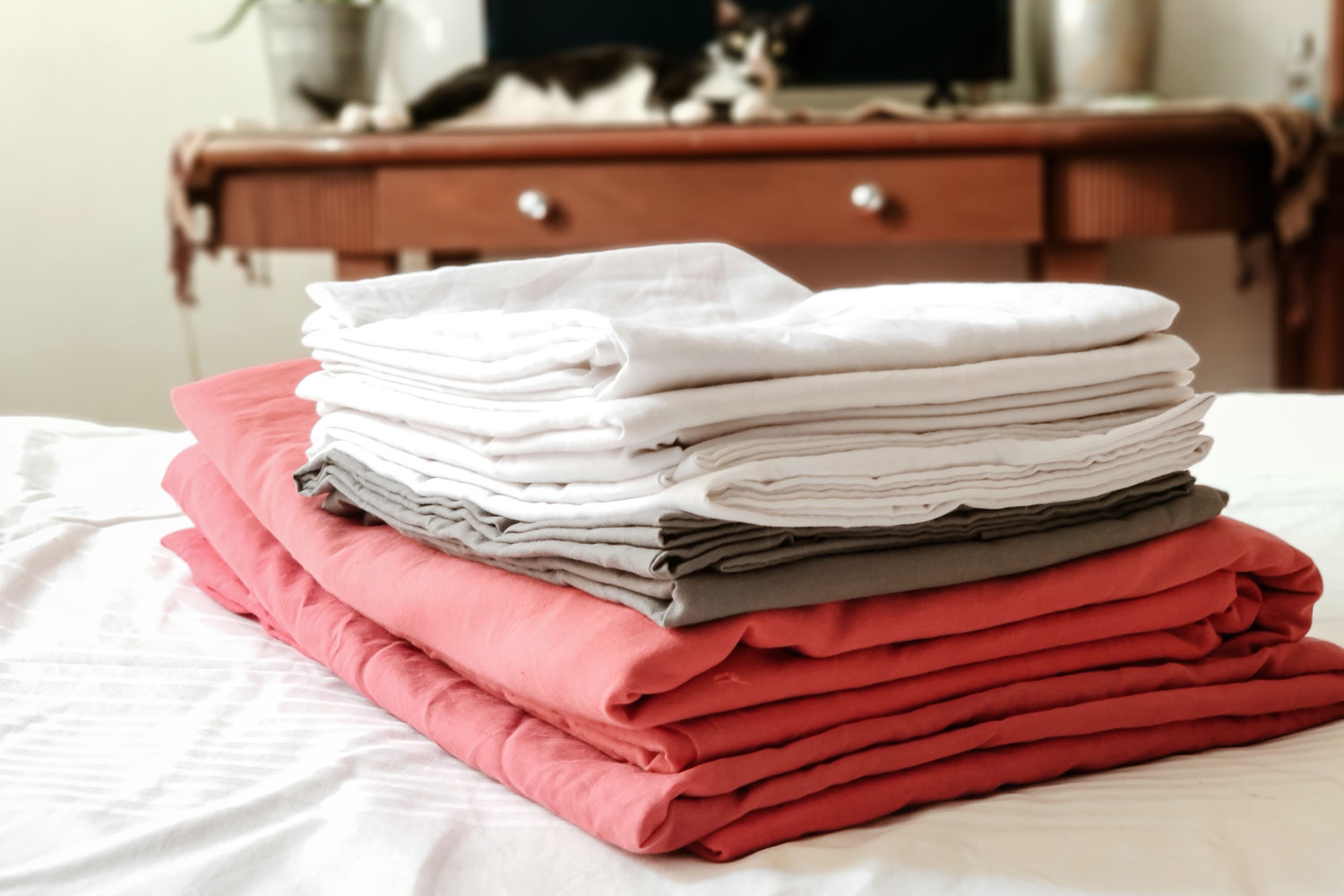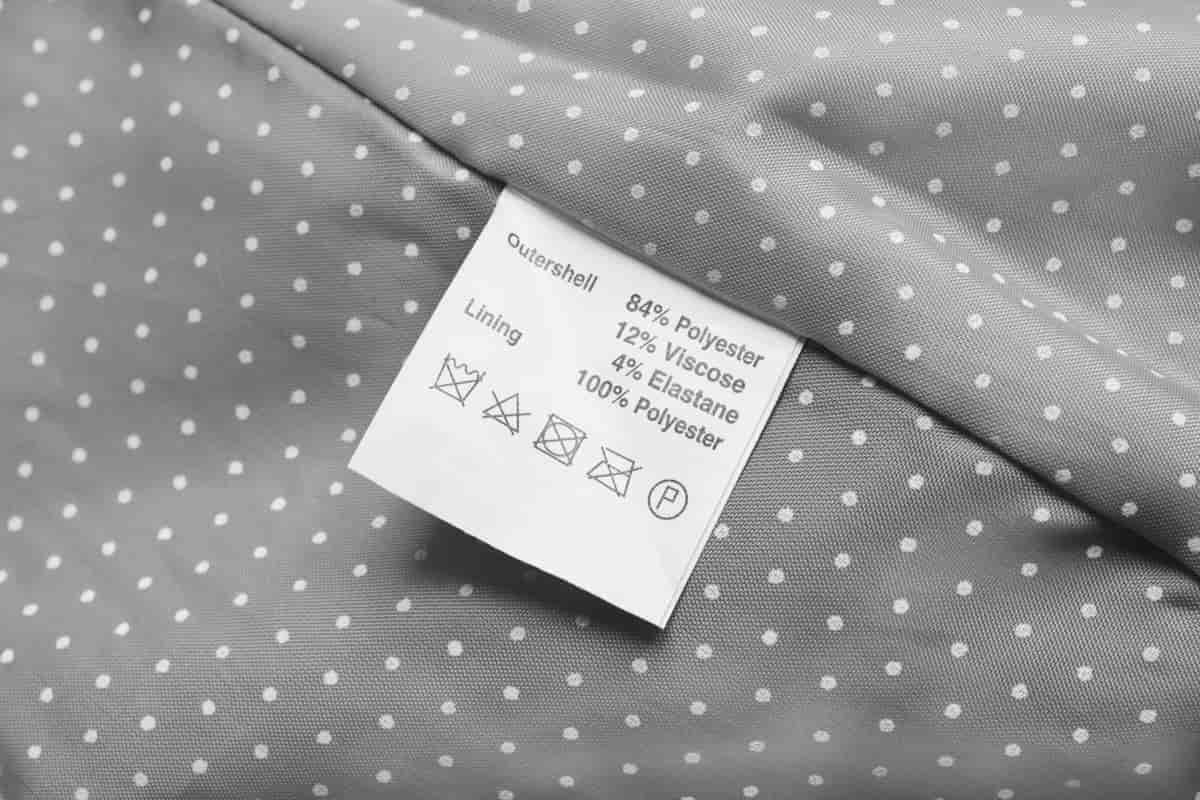Choosing the right duvet for your needs is made easy with this ultimate guide. Don’t feel overwhelmed by all the choice, let us help you become a pro at picking the best duvet for your needs.
After reading it you’ll be able to:
- Know what all-season duvets are
- Identify apt bedding for allergy sufferers
- Choose a duvet based on its construction
- Appreciate the best duvet weight for your needs
- Understand the tog rating and what number is best for you
- Realise what the correct down fill power for your bedding is
- Effortlessly select a cotton, polyester, silk or viscose casing cover
- Confidently decide between wool, down, feather, and synthetic filling materials
Your Duvet Weighing You Down? Time To Pick A New One
Time for bed. You pull back the cover, lay on a comfy mattress and rest your head on an invitingly plump pillow. Sliding the duvet over your body, you settle in for a snug sleep.
But something isn’t quite right.
It might be a lumpy section in the bedding. Or worse, a cold patch.
Perhaps the cover is suffocatingly heavy. Or too light to be felt.
With so much to consider when putting together the perfect bed, it is important not to overlook the bedding. Trying to rest under a duvet that’s not aligned to your preferences can disrupt the entire ensemble, and lead to many nights of poor quality sleep.

Picking The Best Duvet For You
There are many aspects to think about when trying to choose the right duvet, but the following two considerations should provide a great jumping-off board for answers:
Material – Is it something you find comfortable?
Temperature – What level of heat do you prefer?


Picking The Best Material – Duvet Covers
Duvets can be difficult to wash, if indeed they can be at all. It makes sense to use a cover on a mattress to absorb the stresses of wear and tear, but it is important not to overlook choosing one of suitable material. After all, why go through the process of finding the best duvet for your needs, only to undermine it with an inappropriate cover?
While your comfort depends largely on the duvet, the casing is responsible for what your skin is going to feel all night. Selecting a cover with a cosy sensation that won’t irritate you is essential to a good night’s sleep.


Cotton Duvet Covers
A low-maintenance, soft and breathable fabric, cotton is a globally popular choice of cover. Cotton’s tendency to absorb liquid however, means that it can prove problematic for sleepers who drool or sweat a lot, as it is a material that takes quite a while to dry.
Polyester Duvet Covers
Frequently mixed with cotton, polyester is an inexpensive synthetic material that is both soft and durable. In widespread use because of its’ low cost, it might not be quite as breathable as its natural fabric peers, but the cost makes it an excellent choice for those on a budget or wanting bedding for a spare room.
Silk Duvet Covers
An incredibly smooth, natural material, you are likely already familiar with, and appreciative of, the gorgeous fabric that is silk. Its reputation for luxury precedes anything you’ll read here, however you might be less aware that silk has some dust resisting properties which are of particular benefit to those with asthma or allergies. Elegance aside, it is a material that is better suited to a more humid climate, and may prove too cool for those colder British nights.
Viscose Duvet Covers
Feeling lighter than cotton is viscose, a material made partly from synthetic rayon. A smooth fabric, it is an inexpensive alternative to silk.


Picking The Best Material – Duvet Filling
The filling in a duvet determines your level of comfort. Not quite as simple as equating softness to comfort, temperature regulation and material distribution also play a big part.
Down Duvets
A luxury filling, down is a natural material which comes from water bird undercoating. A well-earned reputation for being soft, many compliment it for making them feel as though they are lying on a giant marshmallow. Thanks to the way it manages to retain air, down is exceptional at keeping sleepers warm and snug. Down duvets tend to need plumping up once in a while, which is an acceptable trade-off for the homely comfort it provides.
When selecting a down duvet it is important to give attention to the fill power. Normally ranging from 400 to 900, the higher the number, the warmer and fluffier the bedding will be.
Synthetic Microfibre Down Duvets
Often made of polyester microfibers less than 1 micron in diameter, inexpensive synthetic alternatives to down can be very gentle and warm, but not quite as indulgently soft as their natural counterparts. The greatest benefit is to allergy sufferers, with synthetic fabrics generally being hypoallergenic.
If a duvet that maintains more of its shape is required then it might be worth considering a hollowfibre filling. Similar to microfiber, the key difference is that the hollow strands of fabric retain more air, which results in a hotter sleeping environment.
Feather Duvets
Not considered quite as luxurious as down, feathers used in bedding also come from waterfowl. Taken from birds’ outer coating, unlike down, feathers are flatter and are quilled. Most often, they are paired with down in order to lower the cost of the former.
An excellent filling for a heavier duvet, sleepers who prefer even more weight in their bedding can opt for larger feathers. On the whole, they are considered a dependable, comfortable filling, albeit one that requires the occasional re-fluffing.
Polyurethane Duvets
Polyurethane is a chemical-based waterproof filling which provides a layer of protection in the duvet so that moisture can’t flow through to the mattress from the sheet. This dry environment it provides also safeguards sleepers from bed bugs, dust and stains. A breathable material, it absorbs heat, permitting an overall cooler sleep than most other bedding types.
Wool Duvets
Providing you with a suitable temperature both in Summer and Winter, wool is an especially good heat regulator. A soft, embracing filling, wool is a material with hygroscopic properties which resists moisture absorption to maintain a fresher feeling bed, for longer. A biodegradable, renewable and sustainable fabric, as long as it is regularly plumped it is a duvet filling that will provide years of luxury.


How To Pick The Best Duvet Construction?
Baffle Duvet
An excellent choice of bedding for avoiding cold spots, the baffle duvet construction is usually reserved for those looking for a higher tog rating. The insides are composed of fabric strips which help keep feathers in their place and avoid clumping.
Channel Duvet
This type of bedding is made of seams, or ‘channels’ that run up lengthwise through the duvet. Although adequate, channel duvet construction does tend to let fillings move about too easily, which sometimes leads to unwelcome cold spots.
Box Duvet
The best of both worlds is provided by a box duvet construction, which consistently distributes warmth evenly throughout. This type of bedding is made up of tiny squares that each contain an equal amount of filling that are retained there for its lifetime.
Which Tog Rating Duvet Should You Pick?
The tog rating of a duvet refers to its insulation. The scale ranges from 1 to 15. A higher number means heavier, warmer bedding. Typically, for the summer months a lower figure (1–7) is preferable to prevent getting too hot at night. In the winter, a tog from the higher end of the scale (8-15) is best in order to avoid feeling too cold.
Perhaps due to UK sleepers slightly prioritising their needs for the colder months over that of the warmer days, despite not being quite in the middle of the scale the most popular tog is 10.5.
Those prone to getting hot at night regardless of climate should likely opt for a lighter tog all year round.
All-Season Duvets
All-Season bedding (sometimes called Four Season bedding) is actually two duvets that can be combined or detached to suit the climate. One of them will be a light tog, such as a 3.5 for example, for use in the summer. The second will be a heavier tog, such as an 11, which is added during the winter to increase the rating (in this case to a 14.5), and retain more heat. When not in use, the second duvet is available as a spare.


What Duvet Weight Should You Pick?
You’ve found the ideal duvet casing cover material for your skin.
Your selected fabric filling suits your preferred temperature.
The best construction type for your comfort has been selected…
So what more could there possibly be to think about?
The weight of your bedding plays a significant part in your comfort. Some people like the pressure of a heavy duvet reassuringly tucking them in at night. Others find this suffocating and prefer a lighter, less restrictive covering for getting to sleep. Most of us tend to opt for something in-between the two, a medium weight duvet that makes its presence felt, but not intrusively so.
A common error made when choosing a duvet is to mistake the tog rating for weight. The tog only refers to the warmth of the bedding, and is strictly speaking not related to weight at all. While it is true that bedding with higher togs tend to be heavier, it is not a fixed rule, but a symptom of warmer bedding typically containing more material. It is entirely possible to acquire a light weight duvet with a high tog rating and visa-versa.
Decided on a duvet you like? Then it’s time to turn your attention to some other comfort considerations:
The Ultimate Guide To Picking The Best Pillow
How To Choose The Best Mattress Topper
How To Find The Best Headboard
Need Help Picking Out The Best Duvet For Your Needs?
Deciding on the best duvet for your needs is dependent on many factors.
What tog rating is most suitable for you?
The filling materials that support you best.
The maximum weight you would feel most comfortable under.
There is no need to lose sleep over trying to choose the right bedding. Our specialist advisors at Land of Beds pride themselves on their expert knowledge and ability to guide you to the duvet that’s just right for you.
Our customer-first policy means we listen and give good, independent advice based on the needs of the individual. By pairing consumers up with ethically sourced, affordable, quality products, we provide as many people as possible with a great night’s sleep.
If you would like help being connected with your ideal duvet, feel free to get in touch with us on 01928 242829

